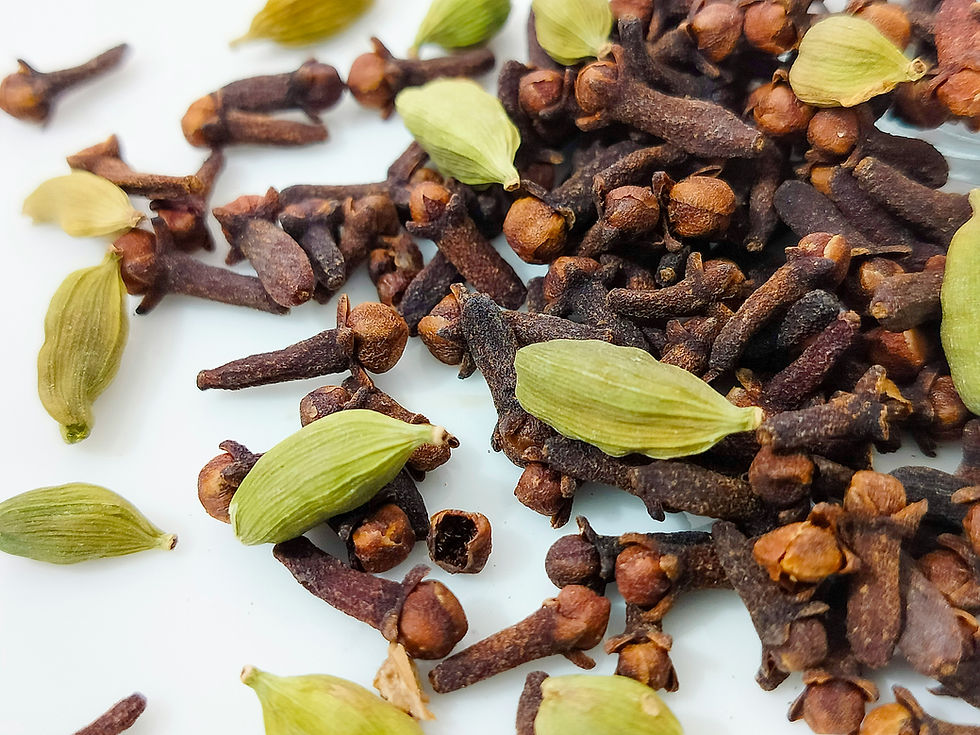From Farm to Cup: Getting to Know Coffee Plants Better
- IT DMK Cargo
- Jul 2
- 2 min read
Updated: Jul 3
Before becoming fragrant roasted beans or the coffee powder you brew every morning, coffee is part of a long journey as a plant. The plant thrives in tropical highlands, soaking up the morning sun and moist air. From here, small bright red fruits emerge, known as coffee cherries.
What Is a Coffee Plant?
The coffee plant belongs to the genus Coffea, part of the Rubiaceae family. It thrives in tropical climates and is classified as a perennial plant, meaning it can live and produce crops for many years. There are over 100 coffee species, but the two most popular and widely cultivated are Coffea arabica (Arabica) and Coffea canephora (Robusta).
Coffee plants can grow up to 3 to 5 meters tall if not pruned. Their leaves are glossy green and dense, and they produce small white flowers with a sweet fragrance reminiscent of jasmine. From these flowers, coffee cherries develop and begin their long journey to your cup.
Coffee Cherries: Coffee Cherries
What we commonly refer to as “coffee beans” are actually the inner part of the coffee fruit, which is small, round, and red when ripe. It is called a coffee cherry because of its shape and color, which resemble a cherry.
Each coffee fruit consists of several important layers:
Exocarp (Outer Skin): Thin, green when unripe, and turns red or yellow when ripe.
Mucilage (Sweet Pulp): A sticky layer beneath the skin, rich in sugar and influencing the coffee's flavor.
Parchment (Seed Coat): A hard layer enveloping the coffee bean.
Green bean (Raw Coffee Bean): This is what is later dried, roasted, ground, and turned into coffee ready to be enjoyed.
Silver Skin (Thin Layer): A very thin layer covering the coffee bean, silver or transparent in color. It typically peels off during roasting, but sometimes remains attached and can affect the aroma and flavor profile of the coffee.

Typically, one coffee cherry contains two coffee beans. However, some only have one whole bean (peaberry), which is quite rare and highly sought after because it is believed to have a more intense flavor.
Where Do Coffee Plants Grow?
Coffee plants can only grow well in regions known as the “coffee belt,” which are areas around the equator with a tropical climate ideal for coffee. The ideal temperature for growth ranges from 15–24°C for Arabica and 24–30°C for Robusta. With fertile volcanic soil, stable rainfall, and thousands of islands with unique ecosystems, it’s no wonder Indonesia is one of the world’s top coffee-producing countries.
Why Is Understanding Coffee Plants Important?
Understanding the structure and characteristics of coffee plants helps identify bean quality from the start. For coffee businesses, this is crucial for selecting the right raw materials, creating consistent flavor, and building a strong product story. This knowledge also opens opportunities for innovation, collaboration with farmers, and enhancing product value and consumer trust.
Interested in incorporating high-quality coffee into your business?
We are ready to partner with you, from supplying the best coffee beans to product education.
Contact us via WhatsApp and Email below:
WhatsApp: +62 813 9669 0008





Comments